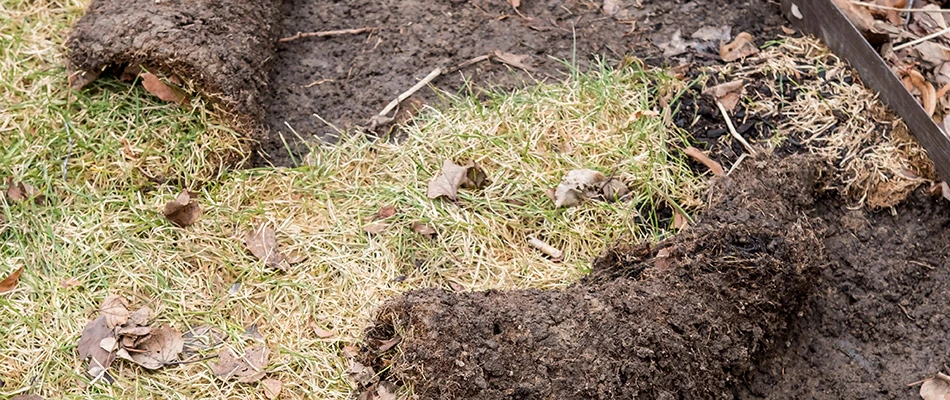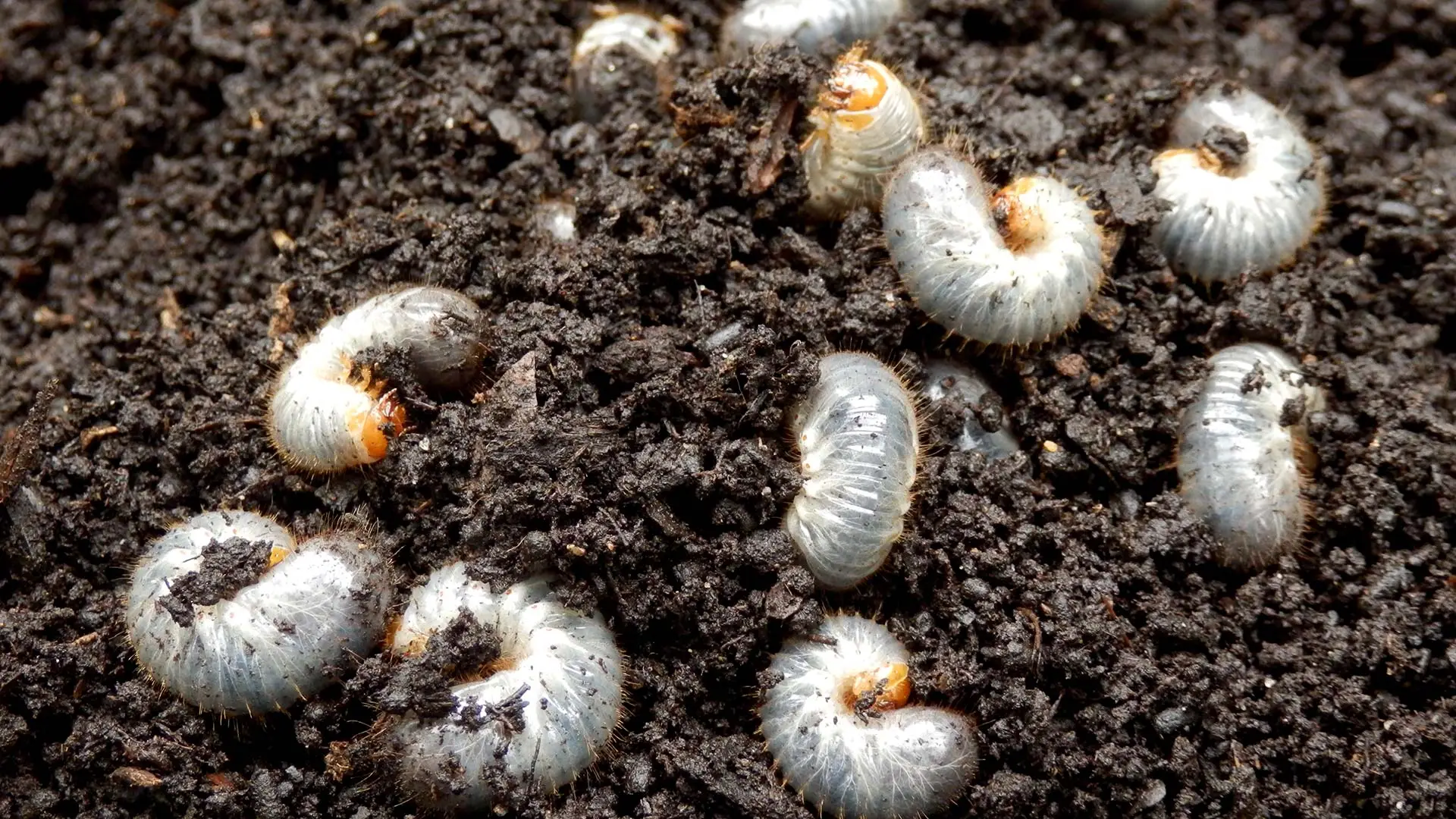Lawn grubs or white grubs are beetle larvae that live in many Ohio lawns. Healthy grass can accommodate some grubs feeding on its roots, but an infestation of the larvae can devastate a property. Treating a grub problem at the right time can save the turf and prevent significant damage.
Ohio Green Lawn & Pest is the premier lawn care provider for Northern Ohio, including Mansfield, Ashland, and Wooster. Our team has years of hands-on experience treating grub-infested lawns and offers preventative grub control services.
What Is the Life Cycle of a Grub?
Grubs are beetles in their earliest life state. To understand how they can infest a lawn, consider the beetle’s life cycle:
1. Mature beetles lay eggs in the soil.
2. Grubs hatch from the eggs.
3. Most grub species will remain in the soil for at least a year and feed on roots.
4. When soil temperatures drop in early fall, the larvae will stop eating and dig deeper into the ground.
5. After being dormant for the winter, they re-emerge near the soil’s surface and continue eating until early spring.
6. By May, the grubs will go back into the earth and transform into pupae.
7. By June or July, the fully mature beetle emerges from the pupae and leaves the soil.
How Do Grubs Damage Lawns?

The grubs will eat many plant roots, including ornamentals, grass, and weeds. Most lawns can handle some beetle larvae living in the soil, but an infestation can lead to thinning patches of turf that will continue to grow bigger unless grub control is in effect.
Common signs of a grub problem include:
- Brown Patches on the Lawn: If parts of the yard remain brown after the grass greens up in the spring, the discoloration could be from grubs. You can check the patch for grub damage by lifting a piece of the turf. If it rolls up, it’s because grubs have eaten the roots.
- Spongy Turf: Sometimes, a section of the lawn will feel spongy underfoot because there aren’t any roots to anchor the plants to the ground. The problem usually precedes turf discoloration.
- Irregular Shaped Patches: Lawns that receive adequate water should not have dying grass. When a malformed patch of dead grass develops on the turf around late summer or early fall, it could result from grubs feasting in that area.
- Hungry Wildlife Digging in Grass: Raccoons, moles, birds, and other animals feed on grubs. When many larvae are in a yard, the animals will dig into the soil to uncover them.
Best Time to Treat Lawns for Grubs in Ohio
When grubs are actively feeding on your roots, you will be able to find them near the surface of your soil. A high concentration of grubs is more than 10 per square foot. At this point, treatment is necessary. The ideal time to apply grub control in Ohio is in the summer and fall when the young larvae are closest to the soil’s surface.
There are two varieties of insecticide treatment for grubs. The first is the curative approach which treats grubs around mid-August, soon after they hatch from eggs. The treatment works for up to three weeks, so timing is crucial. The preventative approach occurs before a grub problem develops. Timing is more flexible with this approach and it works best on newly hatched larvae.
Contact Our Team for a Quote on Grub Control in Mansfield, OH
Don’t let grubs take over your lawn. Reach out to the professionals at Ohio Green Lawn & Pest for our exceptional grub control service. We treat residential and commercial properties throughout Mansfield, Ashland, and Wooster, Ohio. To speak with a helpful team member about your grub control needs, call (419) 528-5698 today.



Comments (0)
Thanks for your comment!
Thanks for your feedback! Your comments have been successfully submitted! Please note, all comments require admin approval prior to display.
Error submitting comment!
There is a problem with your comment, please see below and try again.